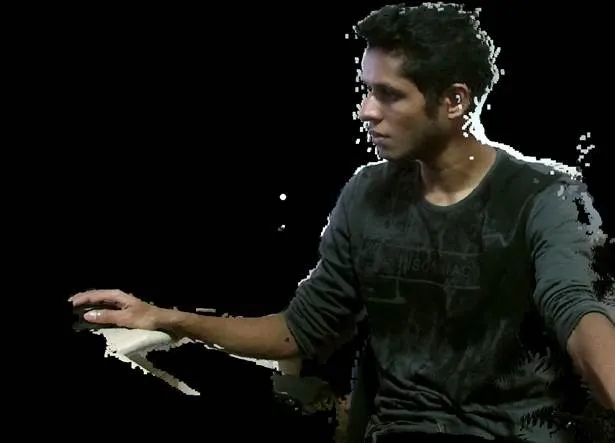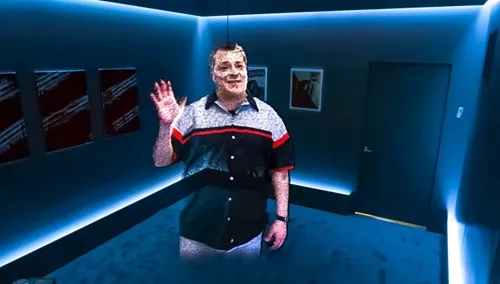2017 has been an exciting year for Valorem’s Immersive Experiences team as more and more clients explore "the art of possible" with innovative and transformative business cases for AR/VR and Mixed Reality applications. In addition to increasing demand, many of our immersive projects this year have leveraged Valorem's proprietary 3D telepresence technology, HoloBeam, which has been in development since the end of 2016. We were also name in a recent Forbes article by Charlie Fink, The Trillion Dollar 3D Telepresence Gold Mine, as a leader among private companies making progress with this technology:
"Private companies are also making impressive progress with 3D volumetric conferencing using both VR and AR, notably, Valorem, whose system enables multiple participants in Europe, India and North America to be volumetrically present in the users' physical office in real time." - Forbes
WHAT IS HOLOBEAM?

Valorem’s holographic telepresence technology, HoloBeam, makes it possible to remotely communicate with colleagues using 3D depth, motion, full color, holographic video and a standard internet connection, from anywhere in the world, in real-time, and with no perceptible delay. HoloBeam is transforming the way businesses collaborate, train and provide customer experiences with AR/VR communication technologies that turn any meeting into a unique, personal and engaging experience without incurring travel expenses or wasting precious time.
HOLOBEAM IN THE FIELD



Valorem will be showcasing our third iteration of HoloBeam this week in the Microsoft Experience Center (IoT Showcase) at CES 2018- one of the largest consumer technology business events in the US. HoloBeam began as a simple Proof of Concept for sending single frames in a local network only however, those Microsoft partners who have been invited to experience the future of telepresence at CES 2018 will see first-hand the tremendous advances made in AR/VR communication technology through our HoloBeam demonstrations. Most recent improvements include significant strides in overall stability via a larger architecture rework as well as advanced real-time filtering and redundancy depth encoding to reduce compression dust artifacts.
 Figure 1: Compression Dusts Artifacts Before
Figure 1: Compression Dusts Artifacts Before
 Figure 2: Compression Dusts Artifacts After
Figure 2: Compression Dusts Artifacts After
THE TECHNOLOGY BEHIND HOLOBEAM

HoloBeam current state builds on top of an adapted WebRTC implementation that uses customized depth encoding to send the 3D volumetric video via a normal internet connection that only requires 3-5 Mbits/sec bitrate. The technology even works below 1 Mbit thanks to adaptive, depth encoding and streaming. Our technology makes it possible to remotely communicate using real-time, multi-party holographic conferencing without delay. The solution even works behind firewalls for parties who will be using the technology within corporate network settings. The connection is established via a routing mechanism and encrypted channel to ensure the best transfer rates and secure, private communication. HoloBeam leverages a custom signaling server for routing through Microsoft Azure which helps to establish a peer-to-peer connection without manually entering addresses. HoloBeam also uses Azure to provide a solution when a strict firewall prevents direct peer-to-peer connections. Most of the HoloBeam core codebase is written in C++ but the frontend and custom point cloud rendering shader are developed with Unity 3D for a cross-platform development experience supporting Holographic Mixed Reality like the HoloLens, Immersive Windows Mixed Reality devices and/or OpenVR like HTC Vive and many more.
FAST FACTS ABOUT HOLOBEAM
- HoloBeam is a skype-like experience that holographically streams full-color, live volumetric video
- Connectivity with normal internet connections and within firewalls
- Available for 3D viewing with AR/VR devices and 2D viewing for desktop, tablet or mobile
- An offline tech demo of HoloBeam is available in the Windows Store for the HoloLens
- HoloBeam is available for live demos and alpha deployments with selected clients
- Broader availability as a standalone solution and SDK for custom app development in 2018
- On-demand or real-time rendering options available
- Recently updated with a larger architecture rework and advanced real-time filtering and redundancy depth encoding
- Pilot partnerships available
WHAT’S NEXT?
Valorem also has a multi-camera solution in development that uses multiple depth cameras to capture a full body volumetric video stream. Our Innovation, Research and Incubation team is also currently researching a HoloBeam Streamer implementation that uses a standalone depth camera with a built-in PC as opposed to the current requirements of a PC with in depth camera. Though HoloBeam is still in early development and unavailable to the general public, we hope through continued work on the technology and collaboration with pilot partners the product will be available for worldwide release sometime in 2018. If you are interested in using HoloBeam in your organization or wish to integrate HoloBeam into your own VR/AR applications, please reach out to us at marketing@valorem.com.







